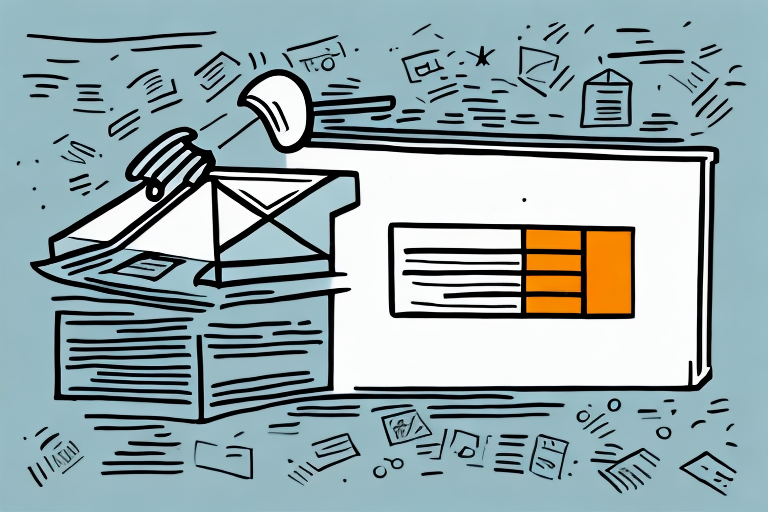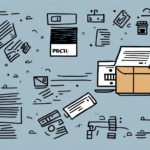UPS Returns Technology Enabled Services Plus Return Label: A Comprehensive Guide
In the fast-paced world of e-commerce, efficient return processes are crucial for building customer loyalty and driving repeat business. UPS Returns Technology Enabled Services offer innovative tools and services that streamline the returns process, making it easier and more convenient for customers while helping businesses save time and money. When combined with a UPS return label, these services become a powerful tool for managing returns effectively.
Why UPS Returns Technology Enabled Services are Important for E-commerce Businesses
In today's competitive e-commerce landscape, customers expect a seamless and convenient returns process. UPS Returns Technology Enabled Services enable businesses to meet these expectations, enhancing the overall customer experience. By offering a range of return options—from scheduled pickups to drop-offs at convenient locations like UPS stores—businesses can tailor their returns process to meet diverse customer needs and preferences. This flexibility not only improves customer satisfaction and retention but also leads to cost savings and increased productivity.
According to a report by The Balance SMB, 90% of customers consider an easy returns process crucial when deciding where to shop. Implementing UPS Returns Technology Enabled Services can help businesses achieve this, fostering customer loyalty and encouraging repeat purchases.
Additionally, these services provide real-time tracking and visibility, allowing businesses to monitor the status of returns efficiently. This capability enhances inventory management and restocking decisions, reducing the time and resources spent on managing returns and freeing up staff to focus on other business areas.
Staying competitive in the e-commerce market is another significant advantage. By offering a seamless and convenient returns process, businesses can differentiate themselves from competitors, attract more customers, and build a stronger brand reputation. This differentiation can lead to increased sales and revenue, positioning the business as a leader in customer service.
How to Implement UPS Returns Technology Enabled Services in Your Business
Integrating UPS Returns Technology Enabled Services into your business is a straightforward process. Start by exploring the available options, including UPS Returns Pack and Collect, UPS Returns Exchange, and UPS Returns on the Web. These services can be seamlessly integrated into your existing e-commerce platform, providing a streamlined returns process for your customers.
UPS offers comprehensive support and resources to help businesses implement these services quickly and efficiently, ensuring a smooth transition and minimal disruption to your operations.
One of the key benefits of implementing UPS Returns Technology Enabled Services is the ability to offer a hassle-free returns experience. Customers can easily initiate a return, print a shipping label, and either drop off their package at a UPS location or have it picked up from their doorstep. This automation not only enhances customer satisfaction but also reduces the workload on your customer service team.
Understanding the Benefits of UPS Return Label for Your Business
The UPS return label is a fundamental component of the UPS Returns Technology Enabled Services. It simplifies the returns process for customers, allowing them to initiate a return with just a few clicks. Each label includes essential information such as the return address, tracking number, and customer details, making the process straightforward for both parties.
Benefits of Using a UPS Return Label:
- Reduced Errors: Automated label generation minimizes the risk of manual errors.
- Enhanced Tracking: Simplifies tracking and management of returns with real-time updates.
- Improved Customer Satisfaction: A hassle-free returns process leads to positive customer experiences and repeat business.
- Cost Savings: Automation reduces labor costs and the potential for costly mistakes.
Implementing UPS return labels can significantly improve customer satisfaction, leading to increased loyalty and positive reviews, which are vital for building a strong brand reputation.
How to Generate UPS Return Labels and Integrate Them into Your Shipping Process
Generating a UPS return label is a straightforward process with multiple options available:
- UPS Web-Based Shipping Tool: Generate return labels and manage shipments from a single, easy-to-use dashboard.
- API Integration: Integrate UPS return labels directly into your existing e-commerce platform using APIs or other tools provided by UPS.
Once generated, return labels can be included in the customer's original shipment or emailed directly to them. It's important to note that UPS return labels typically have a limited lifespan of around 30 days. Therefore, businesses should ensure that labels are generated and sent promptly to avoid issues with expired labels.
Best Practices for Generating UPS Return Labels:
- Include clear instructions for customers on how to use the return label.
- Specify any packaging requirements or shipping instructions.
- Ensure timely generation and distribution of labels to prevent expiration.
Additionally, businesses can track the status of return shipments, providing updates to customers and ensuring timely processing. This transparency enhances customer trust and reduces the workload for customer service teams.
Tips for Managing and Tracking UPS Returns with Technology Enabled Services
Effective management and tracking of returns are essential for the success of your e-commerce business. UPS Returns Technology Enabled Services offer real-time tracking, providing greater visibility and control over the returns process. To optimize returns management, consider the following tips:
- Implement automated workflows and processes to streamline returns handling.
- Use email or SMS notifications to keep both your team and customers informed throughout the returns process.
- Integrate returns data into your existing systems, such as CRM or ERP, for enhanced insights and efficiency.
- Utilize analytics to identify patterns and trends in returns, enabling informed decisions about product design, packaging, and customer service.
By leveraging these strategies, businesses can reduce return rates, improve customer satisfaction, and enhance overall operational efficiency.
How to Resolve Common Issues with UPS Returns Technology Enabled Services Plus Return Label
While UPS Returns Technology Enabled Services offer numerous benefits, businesses may encounter occasional issues such as label generation and printing errors, tracking and visibility challenges, and handling reverse logistics. To address these challenges:
- Work closely with UPS support and utilize online resources like the UPS Help Center.
- Utilize the UPS Developer Kit for technical support and integration assistance.
- Partner with an experienced third-party logistics provider for additional support and expertise.
Ensuring a clear and easy-to-understand return policy is also crucial. Provide detailed instructions on initiating returns, eligibility criteria, and any associated fees or restrictions to prevent customer confusion and frustration.
Data security is another vital consideration. Follow best practices for data protection, including encrypting sensitive information and limiting access to authorized personnel. Regular security audits and training programs can help maintain data integrity and protect customer information.
Best Practices for Using UPS Returns Technology Enabled Services Plus Return Label in Your Business
To maximize the benefits of UPS Returns Technology Enabled Services and UPS return labels, implement the following best practices:
- Clear Instructions: Provide detailed guidance to customers on how to initiate a return.
- Multiple Return Options: Offer a variety of return methods, including in-person drop-offs and scheduled pickups.
- Data Integration: Incorporate returns data into your business systems for improved visibility and efficiency.
- Monitor Returns: Closely track returns to identify trends and opportunities for improvement.
- Continuous Optimization: Regularly review and refine your returns process to ensure it remains effective and efficient.
Additionally, ensure that your return policy is clearly communicated to customers, outlining any restrictions or limitations such as timeframes or condition requirements. Transparent policies help manage customer expectations and reduce the likelihood of disputes.
Choosing the Right Shipping Carrier: Comparing UPS Returns Technology Enabled Services to Other Options
When managing returns, businesses have several shipping carrier options to choose from. UPS Returns Technology Enabled Services distinguish themselves through their flexibility, convenience, and ease of use. Here’s how UPS compares to other carriers:
- Integration: UPS offers seamless integration with a variety of e-commerce platforms and marketplaces, allowing businesses to manage returns from multiple sales channels in one place.
- Customization: UPS provides customizable return options, including label printing, package pickup, and diverse drop-off locations.
- Tracking and Reporting: Advanced tracking and reporting capabilities give businesses real-time updates and detailed analytics on returns.
Compared to other carriers like FedEx and DHL, UPS stands out with its extensive network, reliable service, and comprehensive support resources. These features make UPS a preferred choice for businesses seeking efficient and effective returns management solutions.
The Future of Shipping: Insights into the Advancements in UPS Returns Technology Enabled Services
The e-commerce and shipping industries are continually evolving, and UPS is committed to staying at the forefront of these advancements. In the coming years, we can expect several innovations in UPS Returns Technology Enabled Services, including:
- Enhanced Tracking Capabilities: More detailed and real-time tracking to provide better visibility into the returns process.
- Additional Return Options: Expansion of return methods to cater to diverse customer preferences.
- Improved Integration: Better integration with emerging business systems and platforms for a more seamless returns experience.
- AI and Automation: Leveraging artificial intelligence to predict return patterns, automate processing, and improve overall efficiency.
These advancements will further streamline the returns process, making it more efficient for businesses and more convenient for customers. By staying updated with these technologies, businesses can ensure they remain competitive and continue to provide exceptional customer experiences.
For more information on UPS Returns Technology Enabled Services, visit the official UPS Returns page.






















